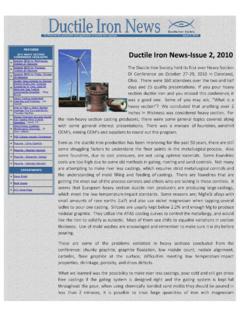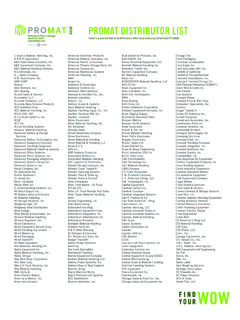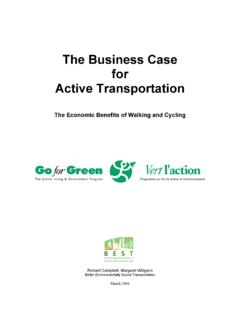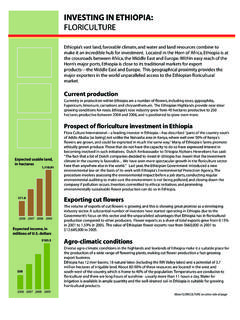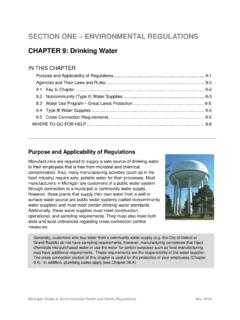Transcription of Great Lakes Shipping Study - Port of Detroit
1 UNCLASSIFIED UNCLASSIFIED National Protection and Programs Directorate Integrated Analysis Task Force Homeland Infrastructure Threat and Risk Analysis Center This page intentionally left blank. January 13, 2014 Great Lakes Shipping Study 1 Executive Summary The Great Lakes St. Lawrence Seaway (GLSLS) system is a vast, interconnected series of navigable waterways, with intersecting modes of transportation and landscapes. The enormity and importance of the GLSLS system cannot be overstated as the region is critically dependent upon it; therefore, it is vital to understand the nature of the system, the industries that rely upon it, its economic impact, and major commodities that flow through the GLSLS.
2 This Study provides an overview of the GLSLS system, focusing on geography, system infrastructure, economic and employment data derived from the GLSLS, and detailed analysis of three key commodities: iron ore, steel, and refined petroleum products. The GLSLS, which borders eight states and spans 2,300 miles, comprises lake Superior, Lakes Michigan and Huron, lake Erie, Montreal- lake Ontario, and the Saint Lawrence Seaway, as well as the channels that connect these navigable sections. and Canadian companies and industries rely on the GLSLS for low-cost, long-distance transportation of raw materials and finished goods. In 2010, and Canadian companies that depend on the GLSLS for moving cargo reported revenues of over $30 billion, more than half of which was generated in the United States.
3 The GLSLS is also responsible for the creation of hundreds of thousands of jobs, providing direct employment for mariners, many types of port employees, and support positions within the companies, as well as creating indirect jobs that result from the spending power of the previously mentioned workers. In 2011, more than 225,000 in the United States and Canada were tied either directly or indirectly to the GLSLS system. Of those, 57 percent were located in the United States. Every year, hundreds of millions of tons of commodities are shipped in the GLSLS. Commodities include iron ore, coal, limestone, cement, salt, sand, and grain, as well as chemicals, petroleum, finished products, and containerized cargo to a lesser extent.
4 Key findings include the following: The Soo Locks, a system of two functioning parallel locks, represent a single point of failure for industries that rely on coal, iron ore, and limestone shipments that transit the GLSLS. Specifically, the Soo Locks System s Poe Lock is critical, as it is the only lock in the entire GLSLS system that accommodates 1,000-foot vessels. An extended disruption of the Poe Lock can potentially disrupt the operations of the industries that depend on commodities shipped through the Soo Locks system. The Army Corps of Engineers (USACE) assesses that 50 percent of the infrastructure in the GLSLS is failing or had failed, meaning that the infrastructure is unable to adequately serve the navigation needs for which it was designed.
5 Low water levels contribute to impact Shipping and the challenges of dredging. The GLSLS has experienced low water levels for more than a decade; however, 2012 set a new record low for Lakes Michigan and Huron. Some estimates assess that the GLSLS is currently operating significantly below its maximum capacity, and indicate that reliance on the GLSLS for Shipping will increase in future years. If dredging backlogs and low water levels remain the norm 2 for the unforeseeable future, growth projections may intersect with physical constraints in the system. Use of the GLSLS system is economically efficient due to economies of scale. A 2007 estimate indicated the average cost savings of Shipping on the GLSLS was $ per ton when compared to all other modes.
6 A single Laker (type of ship) can haul approximately 70,000 tons of cargo, which is equivalent to seven 100-car trains. A ship can travel 607 miles on 1 gallon of fuel per ton of cargo, significantly farther than freight trains and trucks. Steel mills located on the GLSLS depend on low-cost transport of raw materials as an input to the industry. However, the steel industry is not dependent upon the GLSLS for transport of its outputs, finished steel products, as only 1 percent of finished steel is shipped on the GLSLS. Steel mills that use iron ore as a raw material are more dependent upon the GLSLS for transport of raw materials than electric arc furnace (EAF) mills that do not use iron ore as a primary input.
7 Although some communities and companies are dependent on the GLSLS for transport of petroleum, the petroleum industry at large is not dependent on the GLSLS for transport of finished products or raw crude. 3 Table of Contents Executive Summary .. 1 Introduction .. 6 Methodology .. 6 Key Infrastructure Assets .. 7 Geographic Profile .. 7 Asset 9 Lock Systems .. 10 Soo 10 Other Locks .. 11 River/ lake Systems .. 12 St. Mary s River .. 12 St. Clair and Detroit River System .. 13 Canals .. 14 Welland Canal .. 14 Montreal- lake Ontario .. 15 Ports and Harbors .. 16 Shipping and Navigation .. 17 Types of 18 vs. Canadian-Flag .. 18 Current Conditions.
8 19 Federal Roles .. 19 Dredging .. 20 Economic Importance .. 22 Revenue and Efficiencies .. 22 Employment Data .. 23 Key Products and Commodities .. 24 Key Commodities Analysis .. 25 Iron 25 Iron Ore Mining and Production .. 26 GLSLS Iron Ore Shipping Volume .. 26 Iron Ore Shipment Flows .. 27 Limestone Shipment Flows .. 29 Economic Importance .. 32 Steel Manufacturing Inputs .. 32 Introduction .. 32 Steel Mills and Ports in the GLSLS .. 34 Flow of Coke through the GLSLS .. 35 Steel Summary .. 36 Refined Petroleum Products .. 37 Introduction .. 37 The GLSLS Petroleum Network .. 37 GLSLS Petroleum Flows .. 40 Refined Petroleum Product Flow .. 40 GLSLS Island Community Petroleum Product Flow.
9 41 Conclusion .. 42 Recommendations for Further Study .. 42 4 Figures FIGURE 1. Map of Eight States Bordering the GLSLS.. 7 FIGURE 2. GLSLS Lock Systems and Chokepoints.. 8 FIGURE 3. Great Lakes St. Lawrence Seaway Profile. (Courtesy of the St. Lawrence Seaway Management Corporation 2003.) .. 9 FIGURE 4. Location of Soo 10 FIGURE 5. Location of St. Mary s River.. 12 FIGURE 6. Location of St. Clair and Detroit River System.. 13 FIGURE 7. Location of Welland Canal.. 14 FIGURE 8. Welland Canal Profile. (Courtesy of the United States and Canada 2007.) .. 15 FIGURE 9. Location of Montreal- lake Ontario.. 15 FIGURE 10. Dry-Bulk Commodities - GLSLS 1993 2011.
10 (Courtesy of LCA 2012.) .. 25 FIGURE 11. Iron Ore Shipped on the GLSLS 1993 2012. (Courtesy of LCA 2012.) .. 27 FIGURE 12. Flow Of Iron Ore through the GLSLS.. 28 FIGURE 13. Flow of Limestone through the GLSLS to Iron Ore Shipping Ports.. 30 FIGURE 14. Map of Integrated Steel Mills and Flow of Steel on the GLSLS .. 34 FIGURE 15. Map of Petroleum Flow on the GLSLS.. 41 Tables TABLE 1. Ten Most Trafficked Great Lakes Ports (thousands of short tons/year). (Courtesy of USACE Great Lakes and Ohio River Division 2010.) .. 17 TABLE 2. 2011 Share of Major Commodities (short tons). (Courtesy of LCA 2012.).. 18 TABLE 3. Lakers Allocated to USACE Great Lakes Vessel Classification, 2012.



